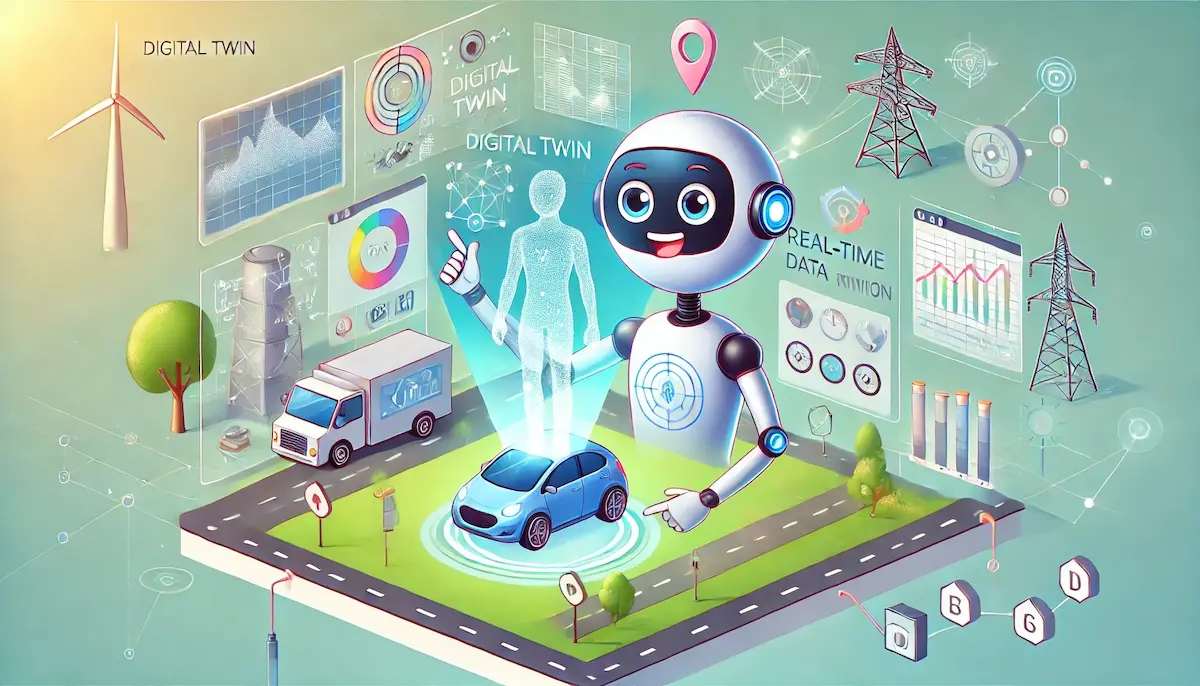A digital twin is a virtual replica of a physical object, system, or process that is used to simulate, analyze, and optimize its real-world counterpart. By integrating real-time data and advanced analytics, digital twins provide a dynamic representation that can help improve performance, predict failures, and facilitate innovation. This technology is widely used across various industries, including manufacturing, healthcare, and urban planning.
How Digital Twins Work
Data Collection
The foundation of a digital twin is data. Sensors and IoT devices attached to the physical entity collect real-time data on its condition, operation, and environment. This data can include temperature, pressure, humidity, vibration, and other relevant metrics.
Data Integration
The collected data is integrated into a virtual model of the physical entity. This model is continuously updated with real-time data to ensure it accurately reflects the current state of the physical object. Advanced analytics and machine learning algorithms process this data to generate insights.
Simulation and Analysis
The digital twin allows for the simulation of various scenarios and conditions. By creating a virtual environment that mimics the real world, engineers and analysts can test different parameters, predict outcomes, and identify potential issues before they occur in the physical world.
Feedback Loop
A key feature of digital twins is the feedback loop between the physical and virtual worlds. Changes or optimizations made in the digital twin can be applied to the physical entity, and vice versa. This continuous interaction ensures that both models remain synchronized and that improvements can be implemented efficiently.
Applications of Digital Twins
Manufacturing
In manufacturing, digital twins are used to optimize production processes, monitor equipment health, and enhance product development. For example, a digital twin of a factory can simulate production workflows, identify bottlenecks, and test changes without disrupting actual operations. This leads to increased efficiency, reduced downtime, and improved product quality.
Healthcare
Digital twins in healthcare can represent organs, medical devices, or entire patients. These models can help in personalized medicine by simulating treatment outcomes, predicting disease progression, and planning surgeries. For instance, a digital twin of a patient’s heart can be used to plan and practice complex cardiac surgeries, reducing risks and improving outcomes.
Urban Planning
City planners use digital twins to create virtual models of cities and infrastructure. These models help in designing smart cities, optimizing traffic flow, managing utilities, and planning for future growth. By simulating different scenarios, planners can make data-driven decisions that enhance urban living.
Aerospace
In the aerospace industry, digital twins are used to monitor the health and performance of aircraft. Real-time data from sensors on the aircraft are used to predict maintenance needs, optimize flight operations, and improve safety. For example, a digital twin of an airplane engine can predict when parts will need replacement, preventing unexpected failures and reducing maintenance costs.
Energy
Energy companies use digital twins to manage and optimize energy production and distribution. For instance, a digital twin of a wind turbine can monitor its performance, predict maintenance needs, and optimize energy output based on weather conditions. This leads to increased efficiency and reliability in energy production.
Benefits of Digital Twins
Improved Performance
Digital twins enable continuous monitoring and optimization of systems, leading to improved performance and efficiency. By simulating different scenarios, organizations can identify and implement the best practices without the risks associated with real-world testing.
Predictive Maintenance
One of the most significant advantages of digital twins is their ability to predict maintenance needs. By analyzing real-time data, digital twins can forecast equipment failures and schedule maintenance before issues occur, reducing downtime and maintenance costs.
Enhanced Innovation
Digital twins provide a platform for experimentation and innovation. Engineers and designers can test new ideas and designs in a virtual environment, accelerating the development process and reducing the time to market for new products.
Cost Savings
By optimizing operations, predicting maintenance needs, and improving product development, digital twins can lead to significant cost savings. They reduce the need for physical prototypes, minimize downtime, and enhance resource utilization.
Better Decision Making
Digital twins provide comprehensive, real-time insights into the state and performance of physical systems. This information enables more informed, data-driven decision-making, leading to better outcomes and reduced risks.
Challenges of Digital Twins
Data Management
The creation and maintenance of digital twins require the collection and integration of vast amounts of data. Managing this data efficiently and ensuring its accuracy and security are significant challenges.
Technical Complexity
Developing and implementing digital twins involves advanced technologies, including IoT, AI, and machine learning. The complexity of these technologies can be a barrier to adoption, requiring specialized skills and expertise.
Integration with Legacy Systems
Many industries still rely on legacy systems and infrastructure. Integrating digital twins with these existing systems can be challenging, requiring significant investments in technology and process changes.
Cost of Implementation
While digital twins can lead to cost savings in the long run, the initial investment in technology, infrastructure, and skills can be substantial. Organizations must carefully evaluate the cost-benefit ratio before implementing digital twins.
The Future of Digital Twins
The future of digital twins is promising, with advancements in technology set to enhance their capabilities and applications. Key trends include:
- AI and Machine Learning: Integrating AI and machine learning will make digital twins more intelligent, enabling more accurate predictions and more sophisticated simulations.
- Edge Computing: By processing data closer to the source, edge computing will enhance the real-time capabilities of digital twins, making them more responsive and efficient.
- Standardization: Developing standards and best practices for digital twins will facilitate their wider adoption and integration across different industries.
- Interoperability: Improved interoperability between different digital twin platforms and tools will enable more seamless integration and collaboration.
Blockfine thanks you for reading and hopes you found this article helpful.
